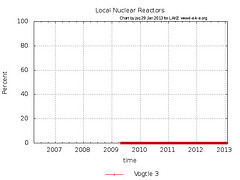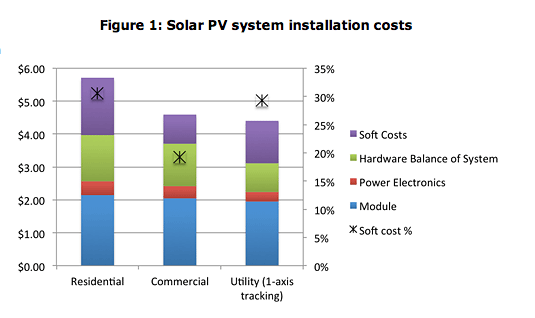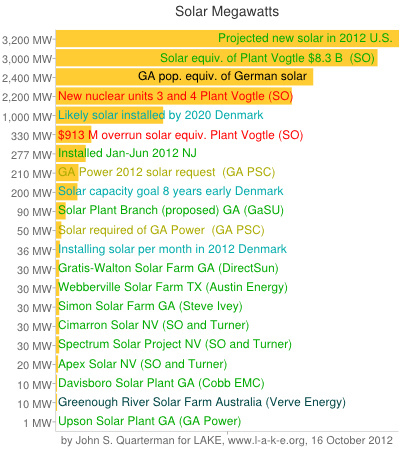 As
anticipated,
Georgia Power released
that
20-year energy plan Thursday,
because they have file one every three years with the PSC.
It includes far less solar power than tiny little far-north-of-here
Denmark is busily deploying.
As
anticipated,
Georgia Power released
that
20-year energy plan Thursday,
because they have file one every three years with the PSC.
It includes far less solar power than tiny little far-north-of-here
Denmark is busily deploying.
 The good news:
Georgia Power is closing a bunch of coal plants.
And this plan makes a nod towards
"demand response programs, energy efficiency programs, pricing
tariffs and other activities".
The good news:
Georgia Power is closing a bunch of coal plants.
And this plan makes a nod towards
"demand response programs, energy efficiency programs, pricing
tariffs and other activities".
The bad news: they're replacing those coal plants with natural gas, and of course "two new state-of-the-art nuclear facilities at Plant Vogtle"; you know, the two Georgia Power has been charging customers for since 2009 while they deliver no electricity. Georgia Power can't even seem to deliver the reactor containment vessels.
But what about renewable energy? Continue reading



